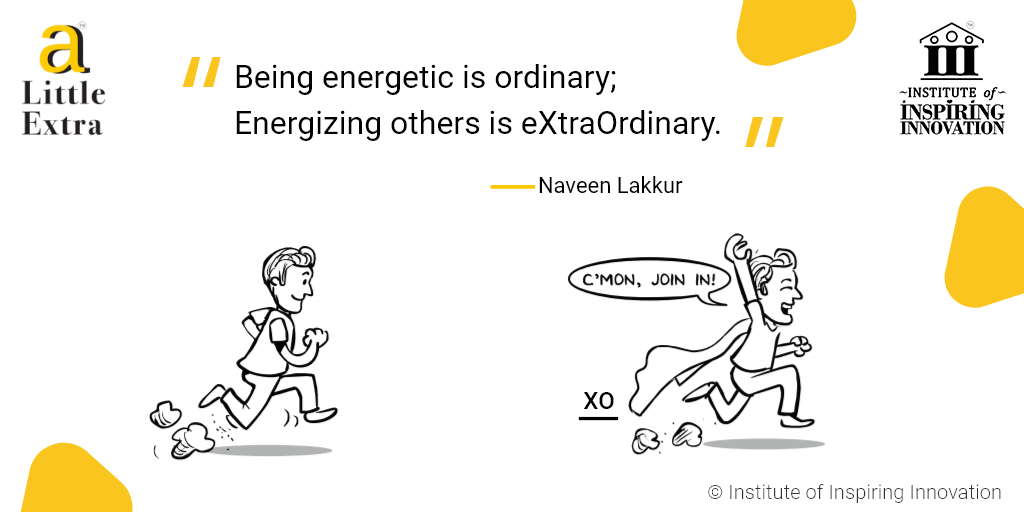Energizing others is eXtraOrdinary

“Being energetic is ordinary. Energizing others is eXtraOrdinary.” – Naveen Lakkur
People who show energy in their tasks, projects, and businesses stand to gain big and grab the attention of people around them. Some people go a Little Extra, they motivate, inspire, and energize others around them or their teammates so that they achieve their goals together sometimes well below the estimated time. People who energize others grab the attention of a lot of people and inspire them. Let us look at a few examples of energizers.

Leave a comment